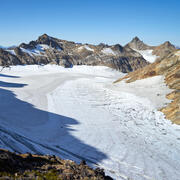Hydrologic Change
The amount of freshwater on the Earth’s surface and in the ground is determined by geology, land use, climate, habitat type, and human management of water resources. The Climate R&D Program conducts multidisciplinary research to establish a sound scientific basis to understand and anticipate the impacts of future change on the Nation's water infrastructure and ecosystems.













